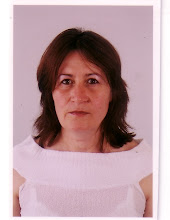The different types of women's costumes can be distinguished by the cut and wearing style of the outer garment (with men's costumes it is the shape and colour of the outer clothes that matters most). These distinctive characteristics vary among the geographical areas and have been influenced by the specific historical circumstances.
The chief items of the two-apron costume include: a chemise, two aprons (fastened at the waist, one worn in front, the other at the back), and a belt. Fine embroidery decorates large portions of the sleeves and the front and back sections of the chemise. The two aprons (or "drapes") were made of home-woven decorative fabric - the back one falling in folds and frills, the front piece consisting of one or two parts with horizontal or vertical embroidery. The back "drape" appeared in a number of variants (vulnenik, bruchnik, tukmenik, peshtemal, kurlyanka, zaveshka) typical of particular geographical areas. The waist-band is a long piece wound several times round the waist. Originally, this ancient female costume had been common across all Bulgarian lands, but in later times it was mainly preserved in the Danubian Plain region.
The soukman dress was the most widely spread female costume. The numerous regional varieties, however, shared certain common (all-Bulgarian) characteristics: the type of textile, the tunic-like cut, and the low neck. The soukman is most often a sleeveless dress, although in some places it has short or long sleeves. Typically, strips of the soukman fabric are attached to the sleeve openings forming the so-called "tails", reduced decorative elements of former sleeves having lost their utilitarian function. The ornamentation of this costume is concentrated on the skirts, along the neck and the sleeves' borders. It consists of multi-colour embroidery, decorative cloth, and braid appliqués, varied in size and style.
The main three varieties of the soukman dress are the kusoklinest (with low, slant wedges, typical of Western Bulgaria); visokoklinest (with high wedges, typical of Central Bulgaria), and the rare two-piece soukman (with a short jacket, chapak, a densely gathered skirt and a long waist-band, typical of some Eastern regions). The soukman dress is worn with a short, woven belt fastened in front with pafti (belt buckle).
The apron is the central decorative piece of the soukman dress. It is richly ornamented and colourful, standing out in beautiful contrast with the black soukman.
The saya dress includes a tunic-like chemise as its major component, but it is characterized by the so-called saya always worn as an outer garment. Open in the front part, slightly wedged, the skirt length varying (knee or ankle length), the sleeves short or long. The saya textiles were of different material and colour. Predominant were the one-colour white, black, blue, and dark blue saya dresses made of cotton or woolen fabrics. (A widespread variant typical of the region along the middle reaches of the Maritsa is made of multi-coloured striped cloth with dominating red.) The decoration of the saya is concentrated on the neck and the borders of the sleeves.
The other important element is the waist-band, black or red, made of woolen fabric. The apron is also woolen, most often red, striped or with multiple woven ornamentation (in some South-western regions). More popular later became the apron decorated with gold threads, used mainly on festive occasions.
The saya dress is most common in the Southern and South-western parts of the territory of ethnic Bulgarian population.
The saya female costume was preserved as late as the mid 20th century when it gave way to modern urban clothes of European type.
The one-apron costume is typical of certain localities in the Danubian Plain and the Rhodopes. It consists of fewer items: a long tunic-like chemise and an apron tied at the waist (either narrow, made of one piece, or wider, two-piece item) with rather simple ornamentation. Till the first quarter of the 20th century it was mainly typical of Bulgarian Moslem women in the Rhodope Mountains, since it was practical and met the requirements of their daily work activities. At the same time, there was a certain desire to make the costume richer, to add more items to it. So, the outer open garment (anteriya, zaboun, or kaftan) was introduced as part of this dress. Characteristic of the women in the Rhodopes region was their preference for light yellow and orange, as well as grass green shades skillfully combined in the texture of the apron.
Абонамент за:
Коментари за публикацията (Atom)

1 коментар:
Thank you for this incredibly detailed article. I know very little about Bulgarian traditions, but have learnt a lot today.
Публикуване на коментар